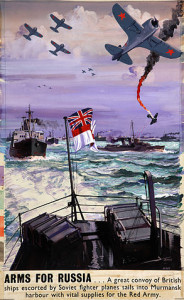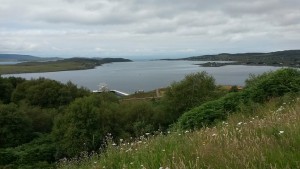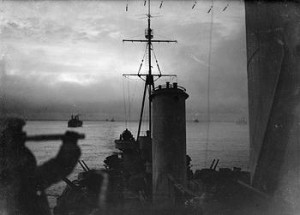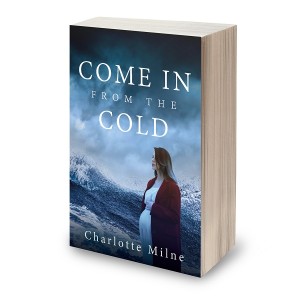 Relevant History welcomes Charlotte Milne, a naval daughter who grew up in the Scottish Borders. She worked for the Scottish National Trust, Makerere University in Uganda, and for an American software house. Although writing ‘stories’ since schooldays, she published her first novel, Dolphin Days, in 2017. Come In From the Cold (summer 2019 release), set in Scotland, tells the story of a WW2 naval officer on Russian convoys, through three generations, solving a seventy-year old murder mystery on the way. Charlotte is a keen genealogist and involved in various community-based organisations. To learn more about her and her books, visit her web site, and follow her on Facebook and Goodreads.
Relevant History welcomes Charlotte Milne, a naval daughter who grew up in the Scottish Borders. She worked for the Scottish National Trust, Makerere University in Uganda, and for an American software house. Although writing ‘stories’ since schooldays, she published her first novel, Dolphin Days, in 2017. Come In From the Cold (summer 2019 release), set in Scotland, tells the story of a WW2 naval officer on Russian convoys, through three generations, solving a seventy-year old murder mystery on the way. Charlotte is a keen genealogist and involved in various community-based organisations. To learn more about her and her books, visit her web site, and follow her on Facebook and Goodreads.
*****
 In World War 2, Roosevelt and Churchill desperately needed to prevent Russia from allying with Germany. If it did so, they knew the western allies would lose the war. In return for Russia’s alliance with the West, Stalin demanded vast amounts of food and arms for his starving and ill-equipped people. Germany and its allies blocked the land routes, so the only way to get supplies to Russia was by sea. The only ports available were within the Arctic Circle—Murmansk and Archangel—with all of Hitler’s sea and air power under orders to prevent them from reaching Russia.
In World War 2, Roosevelt and Churchill desperately needed to prevent Russia from allying with Germany. If it did so, they knew the western allies would lose the war. In return for Russia’s alliance with the West, Stalin demanded vast amounts of food and arms for his starving and ill-equipped people. Germany and its allies blocked the land routes, so the only way to get supplies to Russia was by sea. The only ports available were within the Arctic Circle—Murmansk and Archangel—with all of Hitler’s sea and air power under orders to prevent them from reaching Russia.
How did Britain and the US get supplies to Russia?
 Merchant ships gathered in a deep-water anchorage in the west of Scotland called Loch Ewe. Protected by escorts of heavily-armed allied warships, they joined up with other merchant ships in Iceland, and headed, nervously, towards Russia’s only two northern open-water ports.
Merchant ships gathered in a deep-water anchorage in the west of Scotland called Loch Ewe. Protected by escorts of heavily-armed allied warships, they joined up with other merchant ships in Iceland, and headed, nervously, towards Russia’s only two northern open-water ports.
On the way, the Luftwaffe, based in occupied Norway, would bomb the ships from the air, U-boat submarines lurking beneath the White Sea would attack with torpedoes, and their fast and mighty warships could outgun the Western allies.
We think these days that communication is so simple! Hard to remember that there was no internet, no satellites, and radar was a new technology. Radio silence was kept, to obscure the convoy’s position. Ship to ship communication was by visual signal only.
The weather was a worse enemy. In summer there was 24-hour daylight—enemy aircraft, ships and submarines worked round the clock too. Summer convoys became so dangerous they had to be discontinued. In winter there was 24-hour darkness, the sea froze and the ice sheet grew rapidly from north to south. This meant that convoys had to sail much further south and were then squeezed between the ice and the land mass to the south. Much easier for the Germans to find and attack them.
 Winter storms were indescribable. The winter water temperature often dropped to minus 2 degrees Celsius, air temperature down to minus 22 degrees Celsius, without taking wind into account. Waves were often 40 to 50 feet high, visibility was nil in driving snow and spray, ships came near the vertical both going up and coming down the waves, they crashed and bounced and wallowed and capsized. Capsizing was one of the greatest dangers due to the weight of ice which accumulated above decks from the water flooding the superstructure of ships. Ice accumulated on guns, turrets and shells; masts, rigging, funnels, pipes and guard rails; on containers, aircraft, tanks and munitions stacked on decks, the decks themselves were like ice rinks, doors sealed themselves, ropes, anchors, fenders became as hard as iron and as immoveable. Clothes were inadequate—no ski jackets or cold weather gear as we know it. Crews had to spend hours on deck, tossed about like dolls, chipping at the ice and throwing it overboard, just so that the ship would not turn turtle. Fuel and oil coagulated in the low temperatures. Unimaginable conditions. Unimaginably brave men.
Winter storms were indescribable. The winter water temperature often dropped to minus 2 degrees Celsius, air temperature down to minus 22 degrees Celsius, without taking wind into account. Waves were often 40 to 50 feet high, visibility was nil in driving snow and spray, ships came near the vertical both going up and coming down the waves, they crashed and bounced and wallowed and capsized. Capsizing was one of the greatest dangers due to the weight of ice which accumulated above decks from the water flooding the superstructure of ships. Ice accumulated on guns, turrets and shells; masts, rigging, funnels, pipes and guard rails; on containers, aircraft, tanks and munitions stacked on decks, the decks themselves were like ice rinks, doors sealed themselves, ropes, anchors, fenders became as hard as iron and as immoveable. Clothes were inadequate—no ski jackets or cold weather gear as we know it. Crews had to spend hours on deck, tossed about like dolls, chipping at the ice and throwing it overboard, just so that the ship would not turn turtle. Fuel and oil coagulated in the low temperatures. Unimaginable conditions. Unimaginably brave men.
The convoys drained the British war effort. Every escorting warship was a ship which could have been fighting elsewhere on the warfront. Churchill became extremely unpopular for supplying Russia.
In total, 104 Allied merchant ships and 18 warships were sunk on the Arctic convoys. 829 merchant mariners and 1,944 navy personnel were killed. Killed by guns, torpedoes, sinking, drowning, fire, hypothermia, inhalation of oil and Russian hospitals.
What happened when ships arrived in Russia?
Both Archangel in the White Sea and Murmansk in the Kola Inlet were very basic fishing ports. Wooden quays, virtually no lifting gear, wooden sheds, no hotels or shops of any kind. The officials were deeply suspicious of the capitalists bringing ships and goods into their country. These ports were so far from central government that orders seldom got to them. There was no infrastructure or telephones, and in winter, they were totally isolated. Murmansk was very close to German airfields in Norway, and many ships were bombed lying alongside. Ships companies were not allowed ashore—there was nothing to go ashore for! They were not allowed to use their own boats, even to visit their own ships. Russian guards were posted at every gangplank, bureaucracy was rampant and corrupt, and few Russians were able to speak English or could read or write.
Goods were mainly unloaded by hand by what appeared to be slave labour—serfs—and seldom found their way to the right destination, food supplies for the starving citizens often lying rotting on the quays. Tanks, guns, crated aircraft, munitions—no-one seemed to know who or where they were destined for, nor did anyone seem to care. Many sailors arrived with terrible injuries after German attacks, but the ‘hospital’ was so basic, with no hygiene, facilities or medications, that many died needlessly in ghastly conditions. Western medical supplies were turned away. Many of the RAF planes which should have been protecting Murmansk and attacking German airfields were grounded, but the spare parts brought on the convoys were not allowed to be delivered and were impounded or stolen along with vast amounts of vital war supplies.
The bureaucracy surrounding every movement of every man and every ship, every container and every item transported was such that sometimes it took weeks or months to offload vital supplies for the Russian front line, trapping the escorts in port. Ships were prevented from refuelling, or taking on water or food supplies, their crews virtually starving, despite bringing hundreds of tons of foodstuffs into the country. Stalin might have been an official ally, but for the Arctic convoys, Russia certainly didn’t behave like one.
The story of the Road to Russia and the sacrifice and bravery of those seamen remained almost unknown under The Official Secrets Act. Until 1999 there was no memorial, and no medal was awarded until 2013.
*****
 A big thanks to Charlotte Milne! She’ll give away one £5 Amazon gift card to a reader in the UK who contributes a comment on my blog this week as well as one $5 Amazon gift card to a reader in the United States or Canada who contributes a comment. I’ll choose the two winners from among those who comment by Friday at 6 p.m. ET.
A big thanks to Charlotte Milne! She’ll give away one £5 Amazon gift card to a reader in the UK who contributes a comment on my blog this week as well as one $5 Amazon gift card to a reader in the United States or Canada who contributes a comment. I’ll choose the two winners from among those who comment by Friday at 6 p.m. ET.
**********
Did you like what you read? Learn about downloads, discounts, and special offers from Relevant History authors and Suzanne Adair. Subscribe to Suzanne’s free newsletter.
